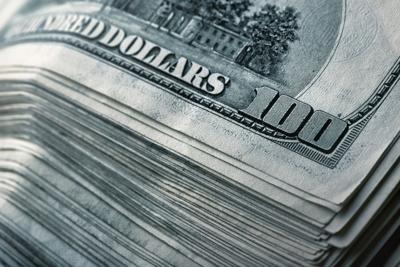This editorial was originally published by The Washington Post and distributed by The Associated Press.
‚ÄĘ‚∂ńĘ‚∂ńĘ
The prevailing dislike for imports among America‚Äôs political class has an old and bipartisan pedigree. At least since the Carter administration ‚ÄĒ the last time the country‚Äôs broad balance of trade was in the black ‚ÄĒ members of both parties have bemoaned the country‚Äôs persistent trade deficit as evidence of some deep national weakness.
President Donald Trump has set himself the task of finally closing it. He is unleashing tariffs ‚ÄĒ for starters, on steel, aluminum and Chinese goods ‚ÄĒ to end the ‚Äúunfair and unbalanced trade‚ÄĚ that allows rivals such as China to enjoy a surplus while the United States bleeds red ink.
Like his predecessors, however, Trump will fail. His tariffs might leave a trail of economic carnage around the world, but close the trade deficit they will not. The trouble is, the trade deficit doesn’t mean what the president thinks it does. And tariffs don’t do what he expects them to do.
If only someone could explain this to him.
They might start by pointing to the ‚Äúcurrent account,‚ÄĚ the record that offers the broadest picture of the trade balance. It includes imports, exports and things like cross-border transfers of interest payments on U.S. bonds held by foreigners and foreign bonds held by Americans. Since 1981, the United States has run a deficit in this account nonstop. But this is not because trade somehow became ‚Äúunfair‚ÄĚ when Ronald Reagan took office.
The core insight is that a country’s current account deficit must always be financed by the rest of the world. If what the United States earns from its exports is not enough to pay for all of its imports, then it must tap foreign money to cover the shortfall. Who provides this cash? The countries that earn more from their exports than what they need to pay for their imports. They have surpluses to lend or invest overseas. The world’s surpluses and deficits thus cancel each other out.
This implies that the mirror image of the string of deficits run by the United States is a pile of foreign money flowing into the country year after year. This puts would-be ‚Äúdeficit closers‚ÄĚ in a spot, because a zero deficit would also mean zero net foreign financing into U.S. stocks, bonds, factories and so on.
This is a fixed reality, not a theory that poses a cause and an effect. It does not rely on assumptions about the behavior of importers and exporters or the performance of other variables. The current account deficit equals foreigners’ net purchases of U.S. assets minus Americans’ purchases of foreign assets.
When the U.S. current account flipped from a small surplus in 1981 to a deficit in 1987 equal to 3.3% of the nation’s gross domestic product, it wasn’t because our trading partners suddenly turned deviously mercantilistic. It was because they gave the United States a lot of money. It would have been nicer, of course, had the money not simply come in to plug a budget deficit that has been expanding pretty much ever since, but instead to finance productive investments. But that wasn’t America’s trade partners’ call.
And the United States didn‚Äôt do badly. Even as the current account deficit swelled during Reagan‚Äôs presidency, employment blossomed. The share of employed prime-age adults ‚ÄĒ those 25 to 54 years old ‚ÄĒ rose more than five percentage points, to 79.6%. Over the next four years, under President George H.W. Bush, the deficit shrank, but so did the share of people with jobs.










